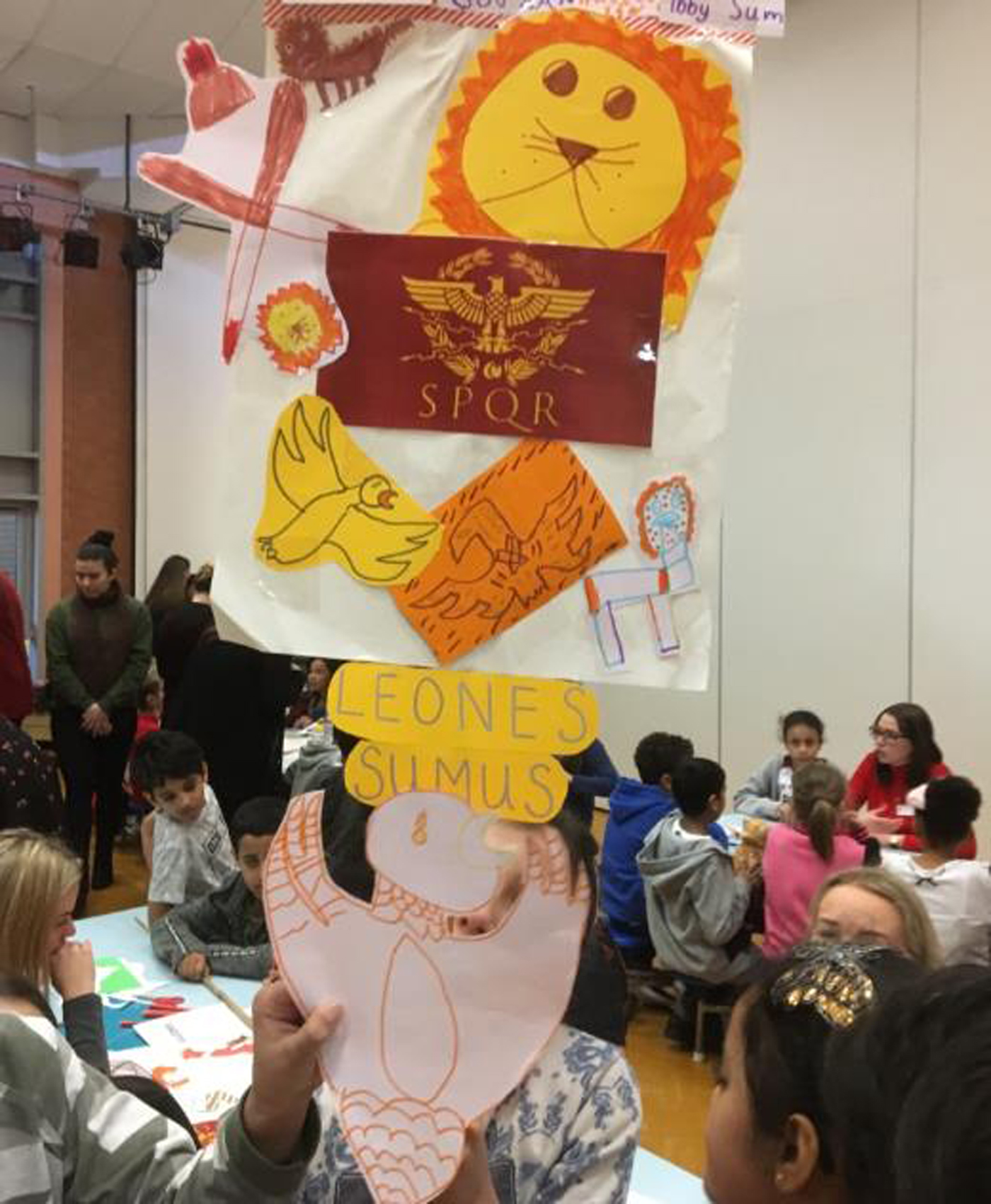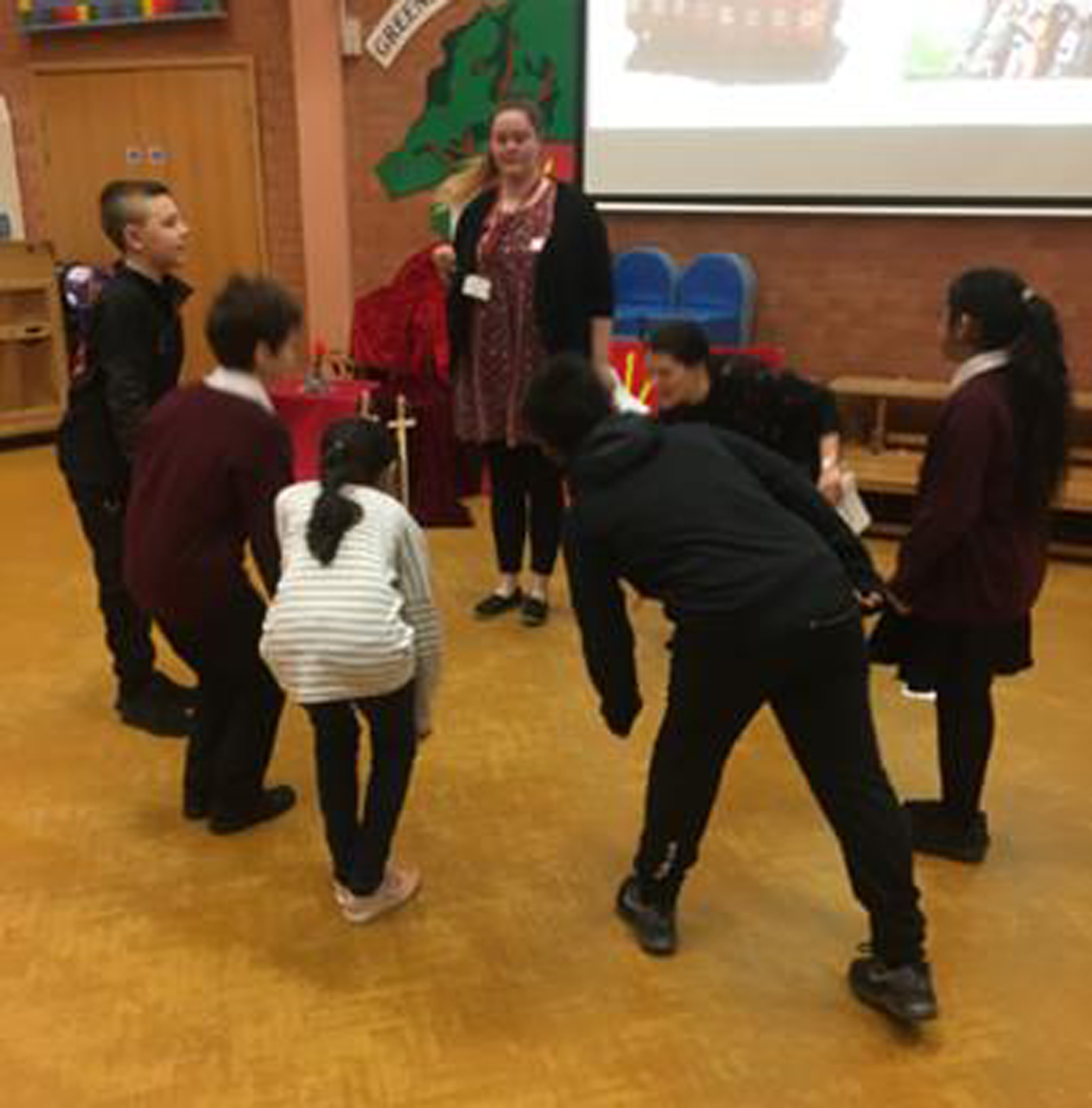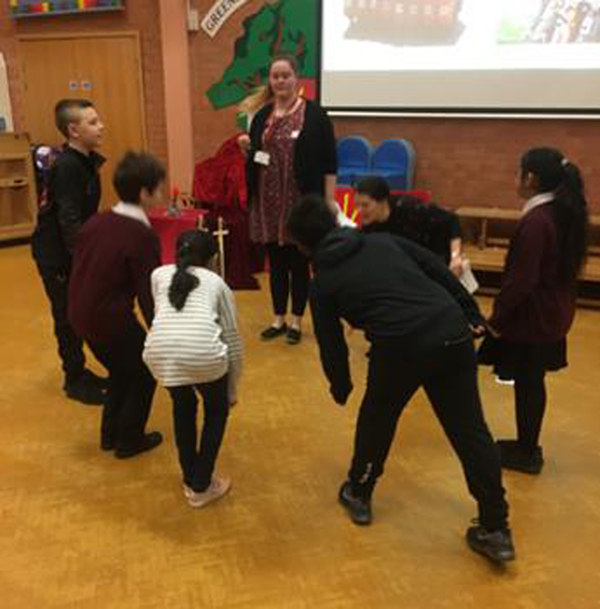This case study will describe a project undertaken with 2nd year students on a three year BA QTSFootnote 1 course to learn and then teach elementary Latin in Key Stage 2. There were 22 students, 11 of whom are studying modern foreign languages (MfL) as their specialism, and the other 11, English. The inspiration for this came from a Primary Latin Taster Day for Liverpool teachers run by the Classics for All-funded Liverpool Classics Hub in February 2017, and we would like to thank Alice Case and Sue Balmer amongst others for many of the ideas that we used.
Context
According to the ‘Unlocking Talent, Fulfilling Potential’ document (DfE, 2017), more disadvantaged children are on average 18 months behind their more affluent peers in their language development by the age of three, ‘and around two fifths of disadvantaged five-year-olds are not meeting the expected literacy standard for their age’ (DfE, 2017, p. 11). Vocabulary is a key predictor of whether a child is likely to succeed at school, ‘and yet on average, by this age, disadvantaged children are significantly further behind in vocabulary than in any other area of cognitive development’ (DfE, 2017, p.12). The document expresses the Department for Education's belief that key to bucking this trend is the provision of ‘language-rich environments’.
Learning Latin has been shown to have had a positive impact on children's literacy. In one London school where the children started to learn Latin, predicted literacy attainment was exceeded by 60% after one year, 75% after two, and 86% after three years (Holmes-Henderson, Reference Holmes-Henderson2015). Research also shows that learning Latin is even more useful for children on pupil premium and lower-achieving groups than for the higher attainers. Many of our ‘two tier’ words - words that characterise written text but are not so common in everyday conversation (Beck, McKeown and Kucan, Reference Beck, McKeown and Kucan2008) - have their roots in Latin; therefore Latin can explicitly teach the children English vocabulary which is so crucial for reading comprehension.
For this reason, we wanted our MfL and English specialist students to be introduced to elementary Latin through the Minimus scheme (Bell, Reference Bell1999), which makes the language accessible and straightforward to teach.
Implementation
We ran two three-hour workshops on consecutive weeks in which the university students were taught some elementary Latin by the Primary English Lead (who has a background in Latin), supported by the MfL lead tutor. We drew on four chapters in Minimus: Starting out in Latin (Bell, Reference Bell1999). The students learned how to give and obey simple commands as soldiers, the names of animals and adjectives to describe them, simple greetings, numbers, and three songs. They also composed their own ‘battle cry’ using mottos of various football teams (e.g. superbia in proelio – pride in battle – which is the motto of Manchester City). The students worked in pairs to plan activities to teach to small groups of Year 5 children in one of our partnership schools. There were 22 students and 50 children, and they worked together for a whole morning.
At the beginning of the morning in school, the children were briefly reminded about who the Romans were, what weaponry a Roman soldier had at his disposal, and why Hadrian's Wall was built. They were asked to imagine that they were a cohort of Roman soldiers who were stationed in Vindolanda, an auxiliary fort just south of the wall. The governor of Britannia, Ulpius Maximus, was going to be visiting the fort later that morning. He would expect to be entertained, and he would want to see that his soldiers were disciplined yet fearsome in battle. The children were organised in groups of five or six. In addition to learning Latin songs, vocabulary and commands, they learned their battle cry and made their own standard using a predatory animal as their mascot, such as bears, wolves and sharks. Just before lunchtime, the governor arrived (a student acting in role), and they performed their songs, their drill and their battle cries. We felt that this performance element gave the learning added focus.

Figure 1. | Pupils create a Roman-style legionary standard
Impact
The feedback from the pupils was very positive. We were struck with how many of them stated that they had enjoyed every aspect of the morning:
‘I really liked today because I liked we got to perform to master of the troops and all the Latin games and design our posters.’
‘Today I enjoyed learning Latin and meeting new teachers, I enjoyed playing with our group's mascot penguin, I loved creating our Standard and learning new songs, but I really enjoyed it all.’
‘I enjoyed the Games we played to memorise the Latin language, the songs and the chanting, making banners and our mascot.’
‘I enjoyed learning a new language - Latin- I also enjoyed seeing the Head of the Romans, I enjoyed making banners.’
The students were also very positive. Many commented on the immersion in the language through role play, and how beneficial that was. They also felt that they would be more confident to teach a foreign language that they themselves were relative beginners in. One in particular noted that the pupils were able to make connections between Latin and English vocabulary:
‘This has made me aware of how learning another language impacts upon the children's knowledge of the English language and their breadth of vocabulary. For example, one of the children immediately connected audite with ‘audio’; this prompted discussion as to what audio meant. I feel that Latin is something that I may visit in the future due to this reason.’

Figure 2. | ‘sumite pila!’ Pupils re-enact a scene using Latin
Further student comments:
‘I had naively assumed that as Latin is a “dead language” the children would not be interested in learning Latin. But in actuality, they all really threw themselves into the experience.’
‘[I enjoyed] the engaging element in the morning – immersion into Latin and the storyline building up to teaching.’
‘The group of children that Emma and myself worked with were very lively and enthusiastic about the learning of Latin. I really enjoyed the teaching of Latin and will take this away on future placements and eventually my own classroom, as the learning taking place through experience was really valuable, for myself and the children.’
‘The whole morning was extremely enjoyable. The children were very easy to work with and engaged really well with the subject. They also were extremely willing to participate and their fantastic attitudes made the morning extremely enjoyable.’
‘The structure of the morning worked extremely well and the concept created by our tutors was fantastic. Our tutors went above and beyond with the support provided to us and created a fantastic environment for us to teach in.’
Next Steps
We aim to repeat this in future years, and hope to develop it further, perhaps with different cohorts of students, such as those undertaking the PGCEFootnote 2. We would also like to develop links with the Liverpool Classics Hub, to explore possible collaboration in future projects.






